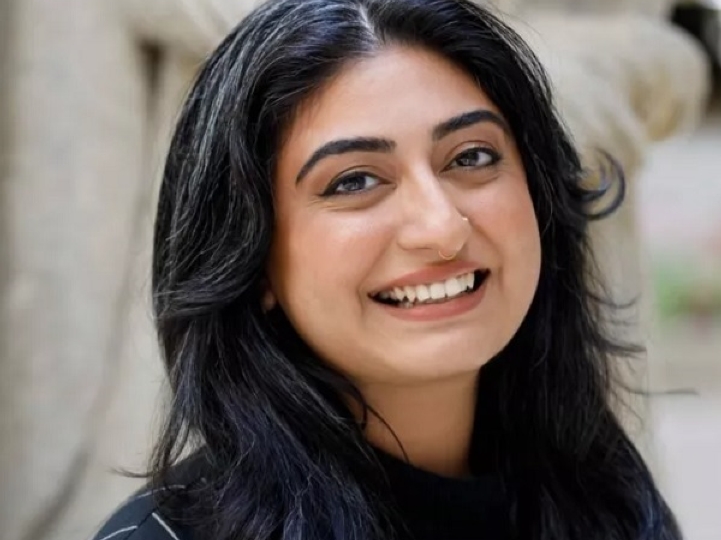
Reflection: Interfaith Is the Means, Not Necessarily the End
Equity, Inclusion and Social Justice Equity, Inclusion, and Social Justice Division Spirituality and Religion in Higher Education Undergraduate
February 1, 2024
JCC Connexions, Vol. 10, No. 1, February 2024
Engaging Civic Religious Pluralism: A Series of Articles
In January, just before observing Martin Luther King, Jr. Day, I accompanied a group of college student leaders to Interfaith America and Hebrew College’s second annual tour of interfaith civic life in Washington, D.C. The Building Interfaith Leadership Initiative (BILI) Launchpad Fellowship first convened these undergraduates last August in Chicago, where 21 young people and their on-campus mentors began building the community they would carry with them during the 23-24 academic year. Upon arriving to our nation’s capital, these students immediately immersed themselves in the diversity of work done at the federal and local levels to support communities of faith seeking to strengthen our multi-ethnic, multi-faith democracy. The program staff’s hope during this experience was to underscore a simple truth: Interfaith is the means, not necessarily the end.
Among the many sites and speakers that the group encountered, we had the privilege of meeting: Rev. Adam Russell Taylor of Sojourners; the Religion and Ethics team of the U.S. Institute of Peace; representatives of the Muslim Public Affairs Council, Islamic Relief USA, Sikh American Legal Defense and Education Fund (SALDEF), and the Friends Committee on National Legislation; Margaret G. Kibben, former Naval chaplain and current chaplain to the U.S. House of Representatives; and Black interfaith leaders from across D.C. who convened with us at Howard University.
The experts’ wisdom was vast and deep, and merely encountering the diversity of ways that interfaith engagement shows up in a single city inspired great conversation among our student fellows. Many were eager to understand how they could bring all that they learned on this trip back to campus, where they and their peers have been actively engaging in discussions on interfaith community-building in the face of deep differences. Some students mentioned specific global crises occurring in the Levant, South Asia, Europe, and here in the United States that would benefit from the meaningful interfaith encounters they had that week. The students asked difficult questions to our guest speakers, to the program planning team, to their mentors, and to each other. While many of those questions remained open by the end of our time in Washington, it was clear that these committed young interfaith leaders understood that interfaith work is as much a how as it is a what.
As I reflect on the week, sorting past the memories of hectic chaperoning, schedule checking, and program facilitating, I’m reminded that the depth and breadth of interfaith work in our nation’s capital can all point back to a simple framework. We at Interfaith America call it the Interfaith Triangle, a simple framework for relationality across difference that our organization has crafted and honed over the past 20 years. The triangle features the following points:
- Building relationships,
- Gathering appreciative knowledge, and
- Cultivating positive attitudes.
One can begin anywhere on the Interfaith Triangle and work toward the other two points withthe goal of building meaningful connections with those they perceive at the Other. The BILI Launchpad Fellows have demonstrated the strength and potential of this simple framework through their interactions with each other. They were able to see the Triangle manifest even further in a number of ways through the work of our D.C. partners whom they met on our trip. One important takeaway that the Interfaith Triangle highlights, that our D.C. sites and speakers underscored, and that the fellows themselves are leaning into now is that “interfaith” itself is not a point on the Triangle. It is the whole Triangle, the way of doing that expands our boundaries, challenges our assumptions, and strengthens our communities.
References
Andrew Rankin Memorial Chapel. (n.d.). Howard University. Retrieved January 18, 2024, from https://chapel.howard.edu/
Chaplain Margaret Grun Kibben, DMin. (n.d.). The Office of the Chaplain, United States House of Representatives. Retrieved January 18, 2024, from https://chaplain.house.gov/chaplaincy/index.html
Home. (n.d.-a). United States Institute of Peace. Retrieved January 18, 2024, from http://usip.org/
Home. (n.d.-b). Muslim Public Affairs Council. Retrieved January 18, 2024, from https://www.mpac.org/
Home. (n.d.-c). Islamic Relief USA. Retrieved January 18, 2024, from https://irusa.org/
Home. (2019). Friends Committee on National Legislation. https://www.fcnl.org/
Home. (2022, August 24). Sikh American Legal Defense and Education Fund (SALDEF). https://saldef.org/
Interfaith America. (2016, August 9). Lesson 4 Module 4D. YouTube. https://youtu.be/yIaTUOG-lgA?si=uyRhkZfjlcYBURix
Kaur Kamboj, H. (2023, April 11). Undergraduate fellows connect with interfaith histories in the nation’s capital. Interfaith America Magazine. https://www.interfaithamerica.org/article/bili-fellows-connect-capital/
Religion. (n.d.). United States Institute of Peace. Retrieved January 18, 2024, from https://www.usip.org/issue-areas/religion
Sojourners. (n.d.). Sojourners. Retrieved January 18, 2024, from https://sojo.net/